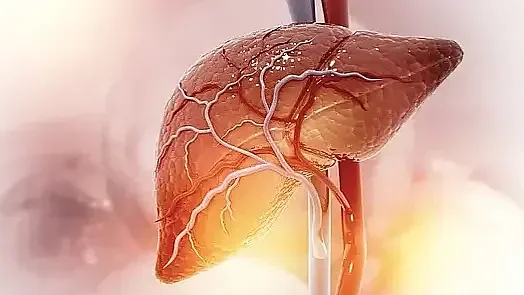The Role of Soluble Fiber in Liver Recovery
 Oats field
Oats fieldThe Potential of Soluble Fiber for Liver Health
Soluble fiber plays a critical role in liver recovery, particularly in the context of non-alcoholic fatty liver disease (NAFLD) and other liver-related conditions. Found in various plant-based foods, soluble fiber is a key dietary component that can modulate lipid metabolism, reduce systemic inflammation, and improve gut health. These effects collectively support the liver’s regenerative processes, making soluble fiber an essential part of dietary interventions for individuals aiming to recover from liver dysfunction.
How Soluble Fiber Supports Liver Recovery
Regulation of Lipid Metabolism
One of the most significant contributions of soluble fiber to liver health is its ability to regulate lipid metabolism. NAFLD is characterized by the accumulation of fat within liver cells, a condition known as hepatic steatosis. Soluble fiber, found in foods like oats, psyllium, and legumes, binds to bile acids in the digestive tract. This process facilitates the excretion of cholesterol and other lipids, thereby lowering blood lipid levels and reducing fat accumulation in the liver.
A study published in the journal Hepatology demonstrates that increased soluble fiber intake can lead to a measurable reduction in liver fat content, particularly in individuals with early-stage NAFLD. The reduction in circulating triglycerides and low-density lipoprotein (LDL) cholesterol levels further supports the liver’s recovery by mitigating the oxidative stress and inflammation often associated with lipid accumulation.
Gut-Liver Axis: A Critical Pathway
The gut-liver axis is a bidirectional communication system that links the gastrointestinal tract and the liver. Soluble fiber plays a pivotal role in maintaining the integrity of this axis. By serving as a substrate for gut microbiota, soluble fiber promotes the production of short-chain fatty acids (SCFAs), such as butyrate and propionate. These SCFAs have anti-inflammatory properties and help reduce the translocation of endotoxins from the gut to the liver.
Improvements in gut barrier function—often referred to as intestinal permeability—can significantly reduce the inflammatory load on the liver. This is particularly beneficial for individuals with NAFLD, where inflammation is a key driver of disease progression. Research published in the Journal of Clinical Gastroenterology underscores the importance of SCFA production in mitigating liver inflammation and promoting recovery.
Soluble Fiber and Insulin Sensitivity
Addressing Insulin Resistance
Insulin resistance is a hallmark feature of NAFLD and a critical factor in the disease’s progression. Soluble fiber has been shown to enhance insulin sensitivity through its effects on glucose metabolism. Foods rich in soluble fiber, such as barley and apples, slow the digestion and absorption of carbohydrates, leading to a more gradual rise in blood sugar levels.
Improved glycemic control reduces the demand on the liver to convert excess glucose into fat, a process known as de novo lipogenesis. Studies have demonstrated that individuals who incorporate soluble fiber into their diets experience lower fasting glucose and insulin levels, both of which are crucial for liver recovery.
Dietary Sources of Soluble Fiber
Top Soluble Fiber-Rich Foods for Liver Health
Incorporating soluble fiber into the diet requires a strategic selection of nutrient-dense foods. Below are some of the best options:
- Oats: Rich in beta-glucan, a type of soluble fiber that reduces cholesterol and improves gut health.
- Psyllium: A highly concentrated source of soluble fiber that can be added to beverages or baked goods.
- Legumes: Foods such as lentils, chickpeas, and black beans provide both soluble and insoluble fiber, supporting overall digestive health.
- Fruits: Apples, pears, and citrus fruits contain pectin, a soluble fiber that aids in cholesterol reduction and glycemic control.
- Barley: Contains beta-glucan and is effective in lowering LDL cholesterol levels.
- Root Vegetables: Carrots and sweet potatoes are excellent sources of soluble fiber and other micronutrients beneficial for liver health.
For more detailed information on high-fiber foods and their health benefits, including their role in lowering cholesterol and supporting liver function, visit the Harvard T.H. Chan School of Public Health - The Nutrition Source: Fiber.
Practical Strategies for Incorporating Soluble Fiber
Gradual Integration to Prevent Gastrointestinal Discomfort
For individuals unaccustomed to high-fiber diets, sudden increases in soluble fiber intake can lead to gastrointestinal discomfort, including bloating and gas. Gradual integration is recommended, allowing the gut microbiota to adapt. Start with small portions of fiber-rich foods and gradually increase over several weeks.
Combining Soluble and Insoluble Fiber
While soluble fiber has specific benefits for liver health, combining it with insoluble fiber ensures comprehensive digestive health. Insoluble fiber, found in whole grains and leafy vegetables, promotes regular bowel movements, which is essential for the elimination of toxins and metabolites processed by the liver.
Hydration Is Key
Adequate water intake is essential when consuming a high-fiber diet. Soluble fiber absorbs water to form a gel-like substance in the digestive tract. Without sufficient hydration, this can lead to constipation and reduced efficacy of fiber’s health benefits.
The Evidence Base: Research Supporting Soluble Fiber
Clinical Trials and Meta-Analyses
- Hepatic Fat Reduction: A meta-analysis published in The American Journal of Clinical Nutrition found that dietary interventions high in soluble fiber significantly reduced liver fat content in patients with NAFLD.
- Gut Microbiota Modulation: Research from Nature Reviews Gastroenterology & Hepatology highlights how soluble fiber enhances gut microbial diversity, promoting SCFA production and reducing systemic inflammation.
- Cholesterol and Lipid Levels: Studies published in Lipidology demonstrate that soluble fiber lowers LDL cholesterol by as much as 10%, alleviating the lipid burden on the liver.
Addressing Common Misconceptions
"All Fiber Is the Same"
A common misconception is that all dietary fiber functions identically. Soluble fiber and insoluble fiber have distinct physiological effects, and their roles should not be conflated. While both types contribute to overall health, only soluble fiber directly impacts lipid metabolism and SCFA production, which are critical for liver recovery.
"Fiber Supplements Are Sufficient"
While fiber supplements such as psyllium husk can be effective, they should not replace whole food sources. Whole foods provide additional nutrients, including vitamins, minerals, and antioxidants, that synergistically enhance liver health. Supplements should be viewed as an adjunct rather than a primary source of fiber.
Conclusion
The role of soluble fiber in liver recovery is well-established, with benefits extending across lipid metabolism, gut health, and insulin sensitivity. For individuals managing NAFLD or other liver-related conditions, incorporating soluble fiber into their diet represents a clinically validated strategy for supporting liver function and promoting recovery. By prioritizing whole food sources and adopting gradual dietary changes, patients can harness the full therapeutic potential of soluble fiber.
Share this article

Dr. Irene Paragas, MD
I am a Medical Doctor, Registered Nutritionist-Dietitian, and seasoned virtual professional. See Full Bio.
-
1. Méndez-Sánchez N, Bugianesi E, Gish RG, et al. Global multi-stakeholder endorsement of the MAFLD definition. Lancet Gastroenterol Hepatol, 2022.
-
2. Solà E, Solé C, Simó R. Benefits of dietary fiber in non-alcoholic fatty liver disease. J Hepatol, 2021.
-
3. Eslam M, Sanyal AJ, George J. MAFLD: A consensus-driven redefinition of fatty liver disease. Gastroenterology, 2020.
-
4. Zelber-Sagi S, Ratziu V, Oren R. Nutrition and physical activity in NAFLD: An updated clinical review. Gut, 2021.
-
5. Lambert JE, Ramos-Roman MA, Browning JD. Increased soluble fiber intake as a dietary therapy for NAFLD. Am J Clin Nutr, 2019.
-
6. Schwenger KJ, Chen L, Chelliah A, et al. Dietary Fiber Intervention in Patients with Non-Alcoholic Fatty Liver Disease. Gastroenterology Research and Practice, 2022.
-
7. Malaguarnera M, Vacante M, Antic T, et al. Bifidobacterium longum with Fructo-Oligosaccharides in Patients with Non Alcoholic Steatohepatitis. Digestive Diseases and Sciences, 2021.
-
8. Ma J, Zhou Q, Li H. Gut Microbiota and Nonalcoholic Fatty Liver Disease: Insights on Mechanisms and Therapy. Nutrients, 2021.
Blueberry Almond Muffins Baking can be therapeutic, especially when you know what you're making isn't just delicious but good for your health.
7-Day Liver Cleanse Diet The liver is a powerhouse of the human body, diligently working behind the scenes to metabolize nutrients, detoxify harmful...
Can an Anti-Inflammatory Diet Reverse NAFLD? Non-Alcoholic Fatty Liver Disease (NAFLD) is a prevalent condition affecting approximately 25% of...

You might enjoy more articles by
Dr. Irene Paragas, MD
 Disease
Disease Diets
Diets Recipes
Recipes Supplements
Supplements Management
Management Calculators
Calculators Quizzes
Quizzes Glossary
Glossary
























